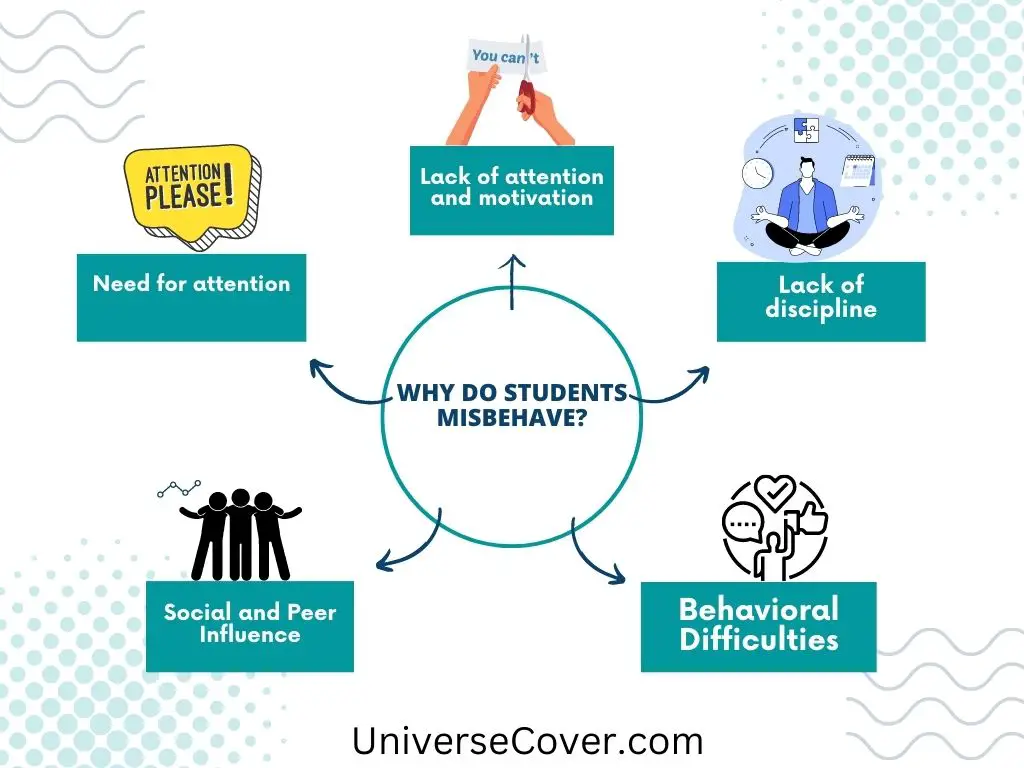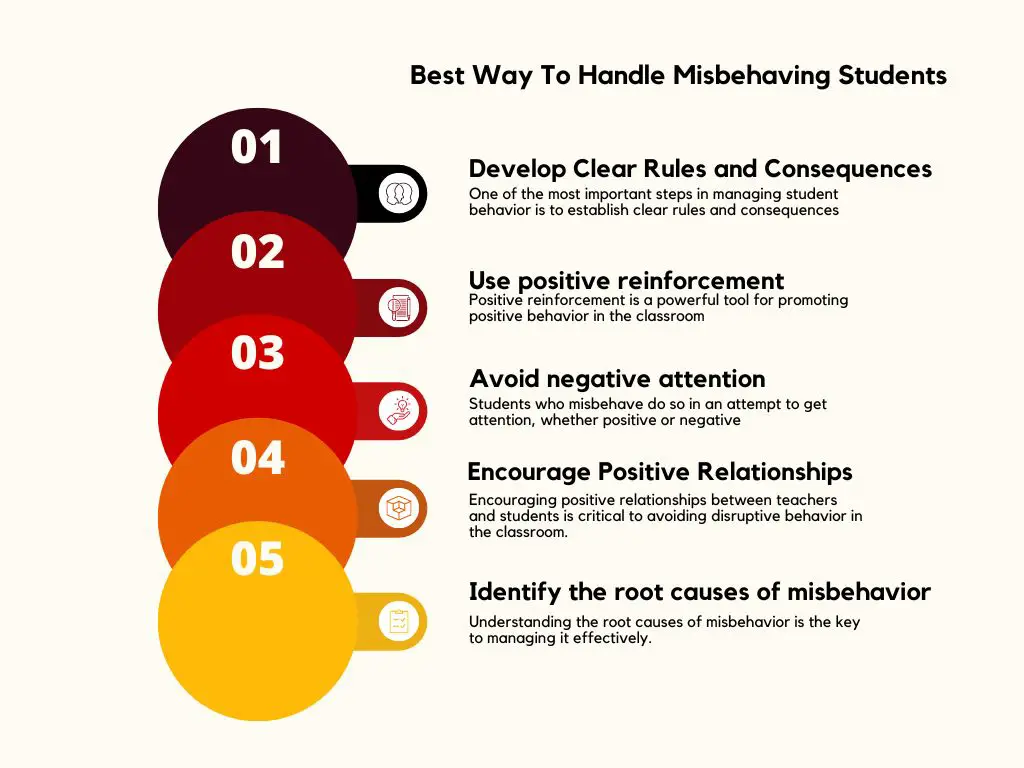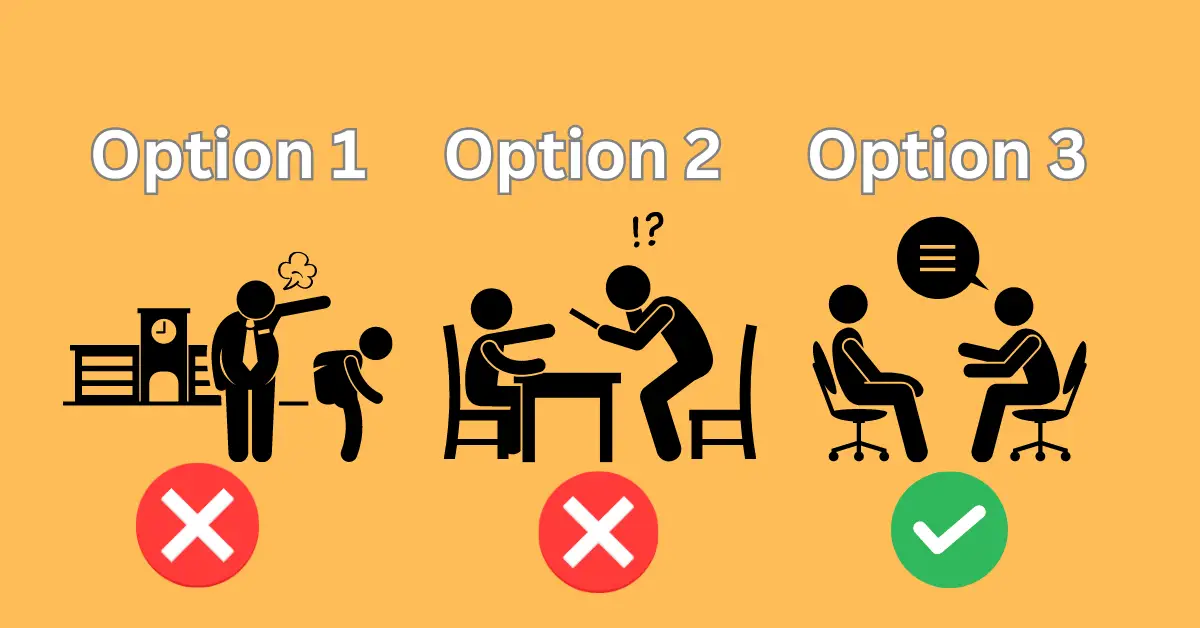How To Handle Misbehaving Students?

As a teacher, managing student behavior in the classroom is a difficult task. In any classroom, there are good students along with bad students who try to spoil the class atmosphere.
However, it is important to strike a balance and ensure that the classroom remains a positive and productive learning environment. This is where effective classroom management strategies come into play. Every teacher should know how to tackle any issue in the classroom because they should know their effective way to provide students with a lot of information then they will their to nations.
First, you should have the handling ability with patience this is the best start that changes the student’s emotional atmosphere. We all know some students in every class irritate the environment consistently. After reading it, we guarantee you can easily handle any situation.
Why Do Students Misbehave?
It is very important to understand the question of why students misbehave in the classroom. Sometimes parental discipline makes the student bad and sometimes friends cause the disorder. The environment plays a vital role in students’ good or bad behavior. Although the reasons for a student’s misbehavior can vary, there are some common reasons why students engage in disruptive behavior:

- Lack of attention and motivation – When students are bored they create disorder in the classroom which affects the class atmosphere so should include fun activities for the students along with learning.
- Lack of discipline – When students are not held accountable for their actions, they may feel free to engage in inappropriate behavior. Therefore, including laws that make students fear failure and work hard.
- Behavioral Difficulties – There are some students who cannot control their emotions and go to extremes of happiness and anger. Such emotional students are sure to disturb the teacher.
- Social and Peer Influence – Some students may engage in disruptive behavior because they are influenced by their friends or because they are trying to fit in with a certain social group. Therefore, such students consider themselves right and others wrong and do not consider their behavior.
- Need for attention – some students engage in disruptive behavior to get attention from the teacher so that the teacher’s attention is on them.
In such a way the teacher treats all the students the same in a friendly environment and does not differentiate between them.
It is important to keep in mind that challenging students do not intentionally intend to disrupt classes. Teachers can create more effective ways to encourage good behavior and deal with disruptive behavior by understanding the reasons for student misbehavior. Teachers can help children overcome the barriers that result in misbehavior and create a safe and effective learning environment by emphasizing discipline, empathy, and positive reinforcement.
5 Best Way To Handle Misbehaving Students:

1. Develop Clear Rules and Consequences
One of the most important steps in managing student behavior is to establish clear rules and consequences. Teachers should work with students to develop a set of classroom rules that are clear, consistent, and appropriate.
So, teachers should also establish clear consequences for breaking the rules, such as time-out or detention, and follow through with those consequences consistently.
2. Use positive reinforcement
This is the 2nd Tip that positive reinforcement which is a powerful tool for promoting positive behavior in the classroom. Teachers should start a campaign to reward well-behaved students, such as by giving them
- Praise
- Stickers
- Other rewards.
Can help students feel motivated and positive about their behavior and motivate them to engage in positive behaviors in the future.
3. Avoid negative attention
Students who misbehave do so in an attempt to get attention, whether positive or negative. Teachers should avoid paying attention to such students, instead of praising them for negative work, shame them so that the students will not do the same thing in the future.
4. Encourage Positive Relationships
Encouraging positive relationships between teachers and students is critical to avoiding disruptive behavior in the classroom.
Doing so keeps the class environment balanced and students in control.
5. Identify the root causes of misbehavior
Understanding the root causes of misbehavior is the key to managing it effectively. Teachers should take the time to understand each students individual needs and challenges and work with students to address any underlying issues, immediately remove students who misbehave, and Encourage them to do good work, it will be very helpful for all the students.

Now we give you the picture, if you choose option 3, it will become beneficial for both the teacher, student and obviously for nation.
Conclusion
Finally, handling misbehaving students in the classroom requires a combination of patience, empathy, and effective strategies.
Teachers should implement clear rules in the school and with consequences, using positive behavior, avoiding negative attention, fostering positive relationships, and addressing the root causes of misbehavior, teachers create a safe and supportive learning environment for all students. can give Disciplined, empathetic, teachers can help students overcome the challenges that lead to misbehavior and promote positive outcomes in the classroom. Whether you’re an experienced teacher or just starting out, these strategies can help you effectively manage misbehaving students and create a successful and positive learning environment for your students.
